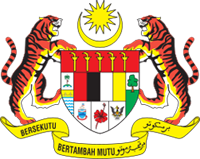Malaysia is a Muslim majority country with significant religious minority populations of Buddhists, Christians, Hindus, and traditional Chinese religion practitioners. According to the 2010 population census, 61.3% of Malaya people are Muslims, 19.8% are Buddhists, 9.2% are Christians, 6.3% are Hindus, and 1.3% other Chinese philosophies, Taoism and Confucianism. Atheism and agnostics constitute 0.8% of the population, and other beliefs make up 1.3% of the population. The constitution declares Islam as a state religion, but it allows freedom of religion. There is a peaceful coexistence between religions and the major holy days for each religion is declared a national holiday in the country.
Islam
The official religion in Malaysia is Sunni Islam, and the practice of any other versions of Islam in the country is prohibited. Traders from Arabia, China, and India introduced Islam in Malaysia and established it in the 15th Century. Islam is the main religion of the state where the king and his family have to be Muslims. The members of the royal family lose their privileges if they deviate from Islam. Muslims believe in Allah and Muhammad as Allah's last prophet. They believe that Muhammad charged them to convert all people to Islam, and those who follow Islamic teachings will inherit physical possessions in paradise. They are governed by the Quran as their holy book and sharia laws are also followed. Many traditional practices of Malaya people are incorporated into Islam traditions. The Islamic holy days are national holidays including the Ramadan. The state terms other Islam beliefs deviant teachings and anyone found practicing such have to undergo rehabilitation.
Hinduism
Hinduism is a dominant religion among the Tamils of Malaysia. It was influential before Islam took over. Its current adherents are the descendants of migrants from Tamil Nadu who came to Malaysia to work on British rubber plantations. They worship in temples and pay reverence to an all supreme being who is imminent and transcendent. Temples in the urban areas are dedicated to a single deity whereas the temples in the rural are home to multiple gods. The temples follow Saivite tradition from West India for the worship of Siva. Hindu holidays such as Thaipusam and Deepavali are national holidays. The people who convert to another religion cease to be members of the Indian community.
Christianity
Christianity came to Malaysia through traders from the Middle East in the 7th Century. The Portuguese arrived in the 15th Century, bringing with them Catholicism, while the Dutch arrived in 1641 and introduced Protestantism. It spread further during the British rule through missionaries in the 19th Century. Christians believe in an all supreme God who created the whole universe and in his son Jesus Christ who died for the sin of humankind to reconcile humans to God. Christianity is a minor religion mostly practiced by a few non-Malay including Bumiputera, some Chinese, and some few Indians. Most Christians are in East Malaysia and states of Sabah and Sarawak. Good Friday is a public holiday and Christmas is a national holiday. Most dominant denominations are Anglican, Methodist, and Roman Catholic. Christianity is restricted in Malaysia as Islam becomes more dominant in the country. There are restrictions on building new churches or in trying to convert Muslims. Their literature must have a note saying that it is meant for non-Muslims only. Their movies are restricted to Christian viewers only.
Buddhism
Buddhism began in Malaysia when Indian traders carried it with them during their travel across maritime routes from the Indian Subcontinent. A majority of Malaysia's Buddhists live in urban areas where they engage in business in many professions. It lacks a supreme head hence is practiced in any form and can sometimes end up in confusion. Most Buddhist approach the religion through the tradition of ceremony and symbolism. Religious practices are carried out in a straightforward and dignified way. During their services, they chant sutras, light lamps and offer flowers.
Religious Freedoms and Tolerance in Malaysia
Other notable religions in Malaysia include practicing of Chinese philosophies such as Confucianism and Taoism. However, most of the Chinese who practice these other faiths proclaim to be Buddhist when asked. A small Sikh community follows Sikhism, and they allow all people to their places of worship. However, no Sikh holiday is a national holiday. Atheism is significantly discriminated against in Malaysia and is not authorized to go public with their atheistic beliefs. Although the constitution guarantees freedom of worship, all Malay ethnic people must be Muslims and cannot convert to another religion. Conversion is punishable by the state through fines or imprisonment. The other ethnic groups have freedom to change religions at their will.
Religious Beliefs In Malaysia
| Rank | Belief System | Share of Population of Malaysia |
|---|---|---|
| 1 | Islam | 61.3% |
| 2 | Buddhism | 19.8% |
| 3 | Christianity | 9.2% |
| 4 | Hinduism | 6.3% |
| 5 | Confucianism, Taoism, and Other Chinese Philosophies | 1.3% |
| 6 | Atheism or Agnosticism | 0.8% |
| Other Beliefs | 1.3% |









